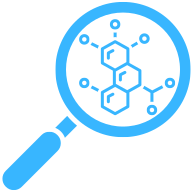Biostatistics, a discipline that merges biology and statistics, is experiencing a surge of innovative trends. This blog post will delve into the latest advancements in biostatistics research, shedding light on how these trends are shaping the future of the field. From machine learning to big data analytics, we'll explore the cutting-edge techniques that are transforming biostatistics and its applications in healthcare and beyond.
The Rise of Machine Learning in Biostatistics
Machine learning, a subset of artificial intelligence, is making waves in biostatistics research. Biostatisticians are harnessing the power of machine learning algorithms to analyze complex biological data, leading to breakthroughs in disease prediction and treatment.
Machine learning algorithms can learn from data without explicit programming. They can identify patterns and make predictions, making them invaluable tools for biostatistics research. For instance, machine learning can help predict disease outcomes based on a patient's genetic profile and lifestyle factors. This can lead to personalized treatment plans, improving patient outcomes.
The use of machine learning in biostatistics is not without challenges. Data privacy issues, algorithmic bias, and the need for robust validation methods are some of the hurdles that need to be addressed. Despite these challenges, the potential of machine learning in biostatistics research is immense and continues to grow.
The Impact of Big Data Analytics
Big data analytics is another trend that's revolutionizing biostatistics research. The advent of high-throughput technologies has led to an explosion of biological data. This data, often referred to as 'big data', is too large and complex to be analyzed by traditional statistical methods.
Big data analytics involves the use of advanced analytic techniques to handle large datasets. In biostatistics, it's used to uncover hidden patterns, correlations, and insights in biological data. For example, big data analytics can help identify genetic markers for diseases, leading to early detection and prevention.
However, big data analytics in biostatistics also comes with its own set of challenges. Data storage, data privacy, and the need for specialized skills are some of the issues that need to be addressed. Despite these challenges, big data analytics holds great promise for the future of biostatistics research.
The Emergence of Bioinformatics in Biostatistics
Bioinformatics, the application of computational tools to manage and analyze biological data, is emerging as a key trend in biostatistics research. It's used to analyze genomic and proteomic data, leading to insights into disease mechanisms and potential therapeutic targets.
Bioinformatics tools can handle large and complex datasets, making them ideal for biostatistics research. They can help identify disease-associated genes, predict protein structures, and analyze patient data, among other things.
Despite its potential, the use of bioinformatics in biostatistics also has its challenges. The need for specialized skills, data privacy issues, and the lack of standardized protocols are some of the issues that need to be addressed. However, the potential of bioinformatics in biostatistics research is undeniable and continues to grow.
The Role of Predictive Modeling
Predictive modeling is another trend that's shaping the future of biostatistics research. It involves the use of statistical techniques to predict future outcomes based on historical data.
In biostatistics, predictive modeling can help forecast disease outcomes, predict patient responses to treatment, and identify risk factors for diseases. This can lead to improved patient care and disease prevention strategies.
Like other trends in biostatistics research, predictive modeling also has its challenges. Overfitting, model validation, and the need for large datasets are some of the issues that need to be addressed. Despite these challenges, predictive modeling holds great promise for the future of biostatistics research.
The Influence of Cloud Computing
Cloud computing, the delivery of computing services over the internet, is influencing biostatistics research. It provides a scalable and cost-effective solution for storing and analyzing large datasets.
Cloud computing allows biostatisticians to access powerful computing resources on demand. This can speed up data analysis, leading to faster research outcomes. Cloud computing also facilitates collaboration, as data can be accessed and shared from anywhere.
However, cloud computing in biostatistics also comes with its own set of challenges. Data security, data privacy, and the need for reliable internet connections are some of the issues that need to be addressed. Despite these challenges, cloud computing is set to play a crucial role in the future of biostatistics research.
The Integration of Genomics and Biostatistics
The integration of genomics and biostatistics is another trend that's shaping the future of biostatistics research. Genomics, the study of an organism's entire genetic material, generates large and complex datasets that require advanced statistical methods for analysis.
The integration of genomics and biostatistics can lead to insights into disease mechanisms, potential therapeutic targets, and personalized medicine. For example, it can help identify genetic variants associated with diseases, leading to early detection and prevention.
Like other trends in biostatistics research, the integration of genomics and biostatistics also has its challenges. The need for specialized skills, data privacy issues, and the lack of standardized protocols are some of the issues that need to be addressed. Despite these challenges, the integration of genomics and biostatistics holds great promise for the future of biostatistics research.
Wrapping Up the Latest in Biostatistics Research
The field of biostatistics is evolving rapidly, with new trends emerging that are reshaping the future of the discipline. From machine learning to big data analytics, these trends are transforming the way we analyze and interpret biological data. While challenges exist, the potential of these trends in advancing biostatistics research is immense. As we continue to harness these trends, we can look forward to a future where biostatistics plays an even more crucial role in healthcare and beyond.

